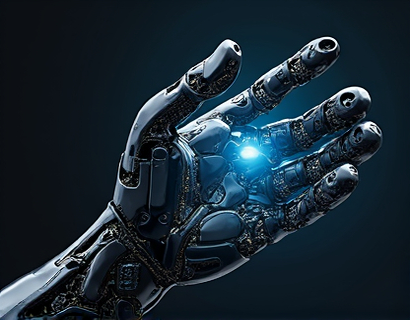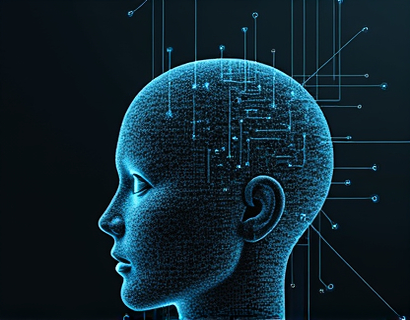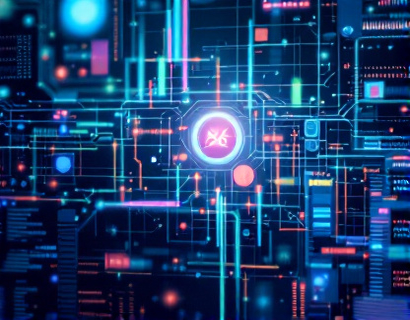Decentralized Excellence: Mastering the Software Stack for Optimal Governance and Collaboration
In the rapidly evolving landscape of decentralized systems, the quest for excellence in governance and collaboration has become paramount. This guide delves into the advanced software solutions that form the backbone of universal decentralized organizations, focusing on how these tools enhance governance, transparency, and efficiency. For enthusiasts dedicated to decentralized systems, mastering the right software stack is crucial for building robust and scalable organizations.
Understanding Decentralized Organizations
Decentralized organizations, often built on blockchain technology, operate without a central authority, relying instead on a network of nodes to maintain and validate transactions. This decentralized nature offers numerous advantages, including increased transparency, reduced risk of single points of failure, and enhanced security. However, achieving optimal governance and collaboration within these organizations requires a well-thought-out software stack.
The Importance of a Robust Software Stack
A robust software stack is the foundation upon which decentralized organizations are built. It encompasses a range of tools and technologies that facilitate governance, communication, and operational efficiency. The right stack can streamline processes, ensure transparency, and enable seamless collaboration among stakeholders. Key components of this stack include blockchain platforms, smart contracts, decentralized applications (dApps), and governance protocols.
Blockchain Platforms: The Core Infrastructure
Blockchain platforms serve as the underlying infrastructure for decentralized organizations. They provide a secure, transparent, and immutable ledger for recording transactions. Popular platforms like Ethereum, Binance Smart Chain, and Polkadot offer different features and capabilities, catering to various use cases. Ethereum, with its extensive smart contract ecosystem, remains a leading choice for building decentralized applications and governance systems.
When selecting a blockchain platform, consider factors such as scalability, transaction speed, gas fees, and community support. Each platform has its strengths and weaknesses, and the choice often depends on the specific requirements of the organization. For instance, Ethereum's EVM (Ethereum Virtual Machine) allows for complex smart contracts, making it suitable for intricate governance mechanisms.
Smart Contracts: Automating Governance
Smart contracts are self-executing contracts with the terms of the agreement directly written into code. They automate and enforce the rules and processes within a decentralized organization, reducing the need for intermediaries and minimizing the risk of human error. Smart contracts can be used for a wide range of governance tasks, from voting and decision-making to asset management and dispute resolution.
On platforms like Ethereum, smart contracts are executed on the blockchain, ensuring transparency and immutability. They can be programmed to trigger actions based on specific conditions, such as the completion of a task or the receipt of funds. This automation not only increases efficiency but also builds trust among participants, as the rules are clearly defined and enforced by the code itself.
Decentralized Applications (dApps): Enhancing Collaboration
Decentralized applications (dApps) are applications that run on a blockchain or a decentralized network, rather than on a central server. They leverage the power of decentralized technologies to provide users with greater control and transparency. In the context of decentralized organizations, dApps can serve as collaborative platforms where members can interact, share information, and collaborate on projects.
dApps can be built using frameworks like Truffle, Hardhat, and Remix, which simplify the development process. These frameworks provide tools for writing, testing, and deploying smart contracts, as well as interacting with blockchain networks. By building dApps that facilitate communication and collaboration, decentralized organizations can enhance their operational efficiency and foster a sense of community among members.
Governance Protocols: Empowering Decentralized Decision-Making
Effective governance is crucial for the success of decentralized organizations. Governance protocols are designed to manage the decision-making processes, ensuring that all stakeholders have a voice and that decisions are made transparently and fairly. These protocols often involve token-based voting systems, where participants use their tokens to vote on proposals.
One prominent example is the DAO (Decentralized Autonomous Organization) model, which uses smart contracts to automate governance processes. In a DAO, members propose and vote on changes to the organization's rules and policies. This decentralized approach to governance empowers members and reduces the risk of centralized control, aligning the interests of all participants.
To implement a governance protocol, organizations can use frameworks like Aragon or MakerDAO's governance tools. These platforms provide pre-built smart contracts and user interfaces for creating and managing governance processes, making it easier for decentralized organizations to establish and maintain effective governance structures.
Interoperability: Connecting Different Blockchain Ecosystems
Interoperability is a critical aspect of building universal decentralized organizations. As different blockchain platforms and ecosystems emerge, the ability to seamlessly interact and transfer assets and data between them becomes increasingly important. Interoperability solutions, such as cross-chain bridges and atomic swaps, enable different blockchains to communicate and work together, expanding the capabilities of decentralized organizations.
Projects like Polkadot and Cosmos are leading the way in interoperability, providing frameworks for building interconnected blockchain networks. These platforms allow for the creation of a unified internet of blockchains, where different chains can share data and execute transactions, enhancing the overall functionality and reach of decentralized organizations.
Scalability Solutions: Handling Growth and Complexity
As decentralized organizations grow, scalability becomes a significant challenge. The need to handle a increasing number of transactions and users requires scalable solutions that can maintain performance without compromising security or decentralization. Layer 2 solutions, such as state channels and sidechains, offer ways to offload transactions from the main blockchain, reducing congestion and lowering fees.
Additionally, sharding, a technique that divides the blockchain into smaller, more manageable parts, can significantly improve scalability. By distributing the workload across multiple shards, each handling a subset of transactions, the network can process more operations per second. Projects like Ethereum 2.0 are implementing sharding to address scalability issues, paving the way for more robust and efficient decentralized organizations.
User Interface and Experience: Making Decentralization Accessible
For decentralized organizations to thrive, it is essential to make the technology accessible to a broader audience. A user-friendly interface and a positive user experience (UX) can bridge the gap between complex blockchain technology and everyday users. Developing intuitive dApps and user interfaces that simplify interactions with the blockchain can attract and retain users, fostering greater participation and engagement.
Frameworks like React and Vue.js, combined with blockchain libraries like Web3.js, can be used to build sophisticated yet user-friendly interfaces. By focusing on UX design principles, organizations can create experiences that are both functional and enjoyable, encouraging more people to engage with decentralized systems.
Security: Protecting Decentralized Assets and Data
Security is a paramount concern for decentralized organizations, as the loss of assets or data can have severe consequences. Implementing robust security measures is essential to protect against threats such as smart contract vulnerabilities, phishing attacks, and 51% attacks. Best practices include conducting thorough code audits, using secure coding standards, and implementing multi-signature wallets for critical transactions.
Security frameworks and tools, such as Slither and Mythril, can help identify and mitigate vulnerabilities in smart contracts. Additionally, educating users about security best practices, such as keeping private keys secure and being cautious of phishing attempts, is crucial for maintaining the integrity of the organization.
Case Studies: Real-World Applications
To illustrate the practical applications of these software solutions, let's examine a few real-world examples of decentralized organizations that have successfully implemented advanced software stacks.
MakerDAO: MakerDAO is a decentralized finance (DeFi) platform that issues the stablecoin DAI. It uses a combination of Ethereum's smart contracts and a governance token (MKR) to manage its operations. The platform's governance protocol allows token holders to propose and vote on changes, ensuring decentralized decision-making. MakerDAO's use of stable debt and collateral management smart contracts demonstrates the power of automation in governance.
Aragon: Aragon is a decentralized organization builder that provides a suite of tools for creating and managing DAOs. It leverages Ethereum's blockchain and smart contracts to offer a user-friendly interface for setting up governance structures, managing tokens, and executing proposals. Aragon's platform has been used by various organizations to decentralize their operations, showcasing the potential of governance protocols in practice.
Polygon: Polygon, formerly Matic Network, is a scalability solution that enhances the Ethereum ecosystem. It uses sidechains and layer 2 protocols to increase transaction throughput and reduce fees. Polygon enables developers to build scalable dApps and decentralized applications, making it easier for organizations to operate efficiently on the Ethereum network.
Conclusion
Building universal decentralized organizations requires a comprehensive approach that integrates advanced software solutions to enhance governance, collaboration, transparency, and efficiency. By leveraging blockchain platforms, smart contracts, dApps, governance protocols, and scalability solutions, organizations can create robust and scalable ecosystems that empower their members and drive innovation.
As the decentralized landscape continues to evolve, staying informed about the latest tools and best practices is essential for success. By mastering the right software stack, enthusiasts can contribute to the development of decentralized systems that redefine the future of governance and collaboration.










































